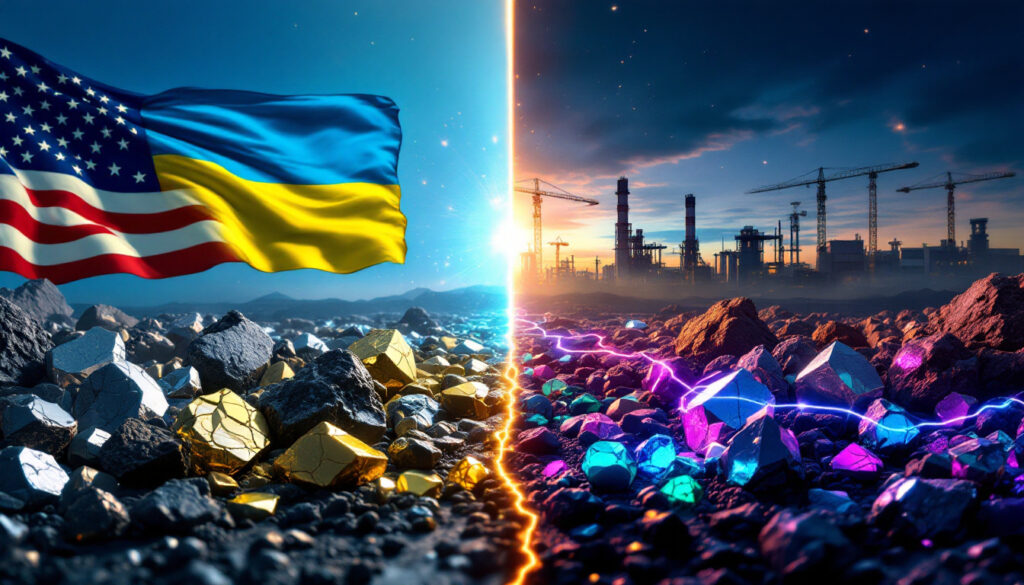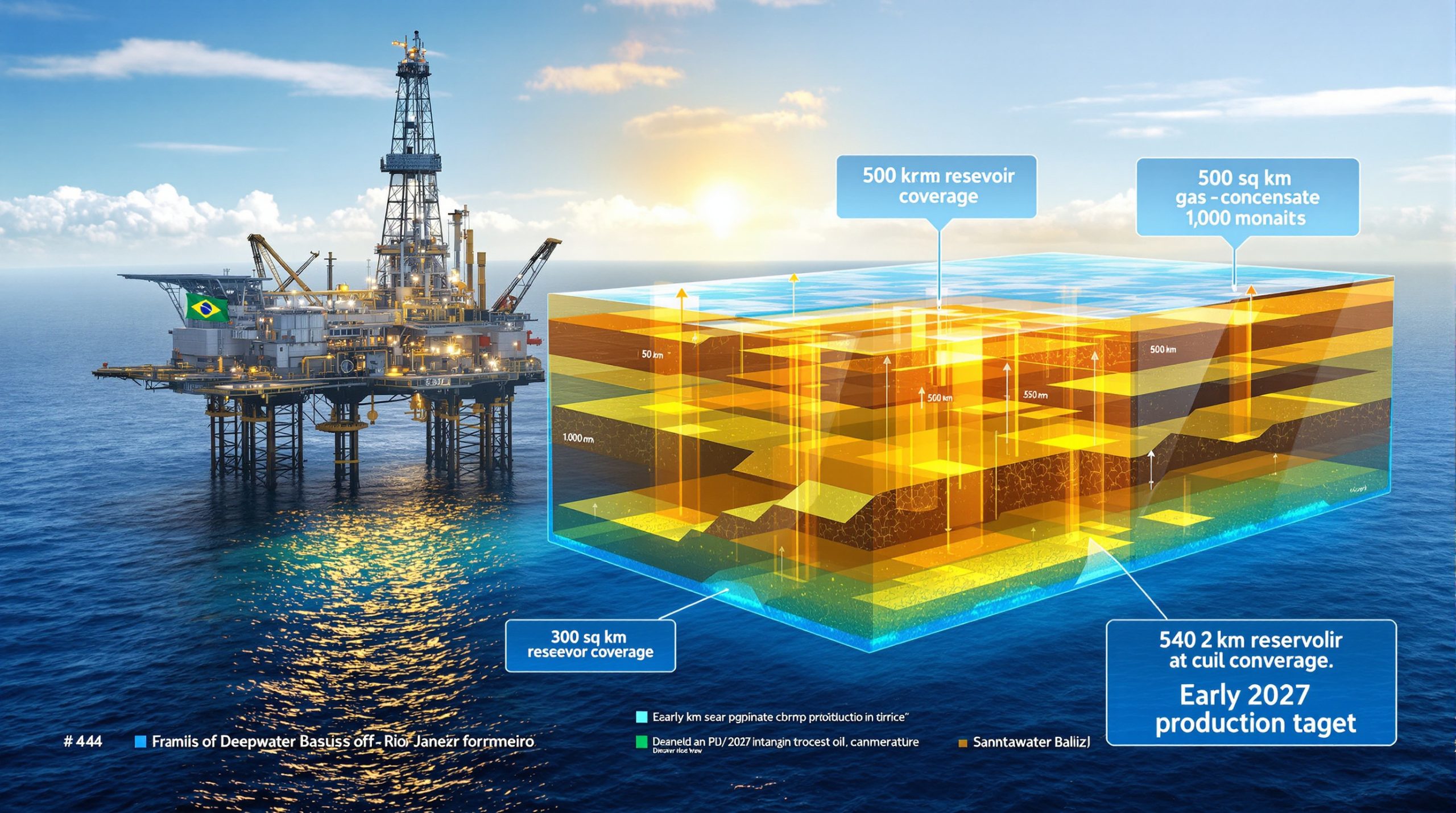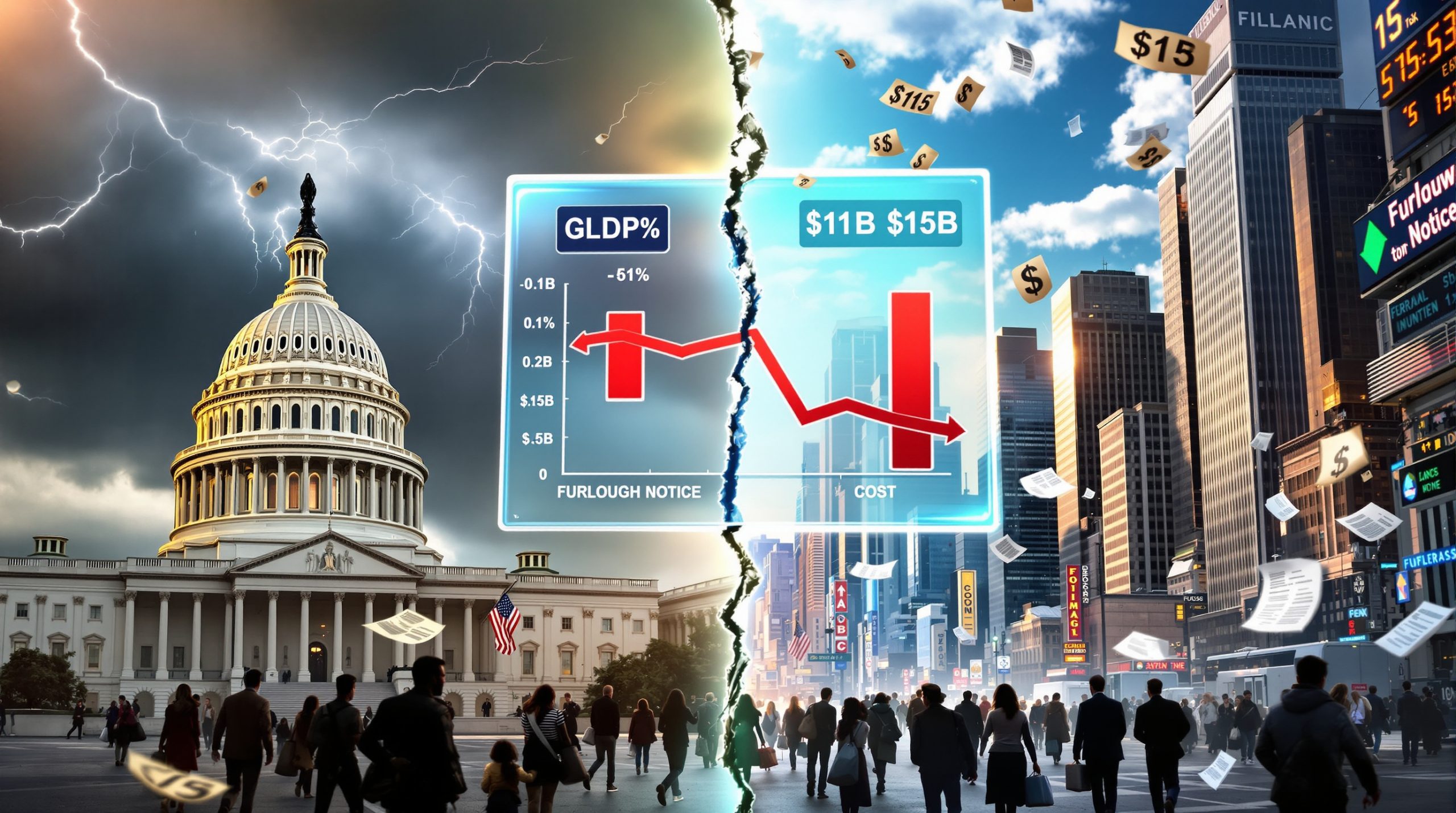What Is the US-Ukraine Minerals Agreement and Why Does It Matter?
The Strategic Framework Beyond the Headlines
The US-Ukraine minerals deal establishes a joint Reconstruction Investment Fund focused on developing Ukraine's extensive sub-soil resources, including metals, oil, and gas. This partnership extends far beyond rare earth elements, encompassing a comprehensive resource development strategy that signals long-term American commitment to Ukrainian sovereignty.
Deputy Prime Minister Yulia Svyrydenko has set realistic expectations, emphasizing that dividends from this strategic partnership aren't anticipated for at least 10 years. This timeline underscores the deal's forward-looking nature amid Ukraine's ongoing territorial conflicts.
The agreement represents a calculated response to China's dominance in critical minerals markets, where Beijing controls approximately 70% of global graphite production and similar percentages of rare earth processing capacity. For Washington, this partnership addresses growing concerns about supply chain vulnerabilities in sectors essential to national security and energy transition.
Distinguishing Symbolism from Substance
While the agreement delivers immediate diplomatic value by reinforcing American support for Ukraine, significant practical challenges complicate implementation. Ukrainian think tanks estimate that over 40% of the country's metal resources currently lie in Russian-occupied territories, creating a fundamental access problem.
The minerals partnership serves multiple strategic objectives beyond resource extraction. For Ukraine, it represents a commitment to long-term reconstruction financing. For the United States, it demonstrates concrete action to counter Chinese resource diplomacy while supporting a strategic ally.
Industry analysts note that similar minerals agreements typically take 15-20 years to yield significant production, making this deal more about strategic positioning than immediate resource security. The most valuable aspect may be establishing a framework for Western technical collaboration in mineral processing, an area where Ukraine lacks infrastructure.
How Valuable Are Ukraine's Mineral Resources Really?
Mapping Ukraine's Critical Mineral Potential
Ukraine possesses substantial deposits of lithium, uranium, titanium, graphite, and rare earth elements that could eventually contribute to global supply chains. The country's geological surveys, many dating back to Soviet-era explorations between 1982–1991, indicate significant but largely undeveloped potential.
The Novopoltavske rare earth field in Zaporizhzhia province represents one of Europe's largest rare earth deposits, containing an estimated 1.5 million tons of rare earth oxide equivalent. However, its proximity to active conflict zones complicates any near-term development plans.
The Balakhivske graphite project has advanced to feasibility studies and represents one of the more immediately viable opportunities. With measured resources of approximately 6.5 million tons of high-purity graphite, this deposit could eventually supply European battery manufacturing—if market conditions stabilize.
Ukraine's titanium resources are particularly significant, with reserves that could potentially supply 10-15% of global demand once fully developed. The country previously exported titanium sponge to aircraft manufacturers, demonstrating established expertise in this sector.
The Territorial Reality Check
The harsh reality is that approximately 40% of Ukraine's metal resources currently lie under Russian occupation, according to assessments from Ukrainian think tanks. This includes two major lithium projects and significant uranium deposits in eastern regions.
Access to the Novopoltavske rare earth field remains problematic due to its location in Zaporizhzhia province, an area that has seen extensive conflict. Any meaningful development requires territorial resolution that remains elusive in current peace negotiations.
Even for resources in secure Ukrainian territory, proximity to conflict zones raises insurance costs and complicates investment security. Mining projects typically require 8-10 year development timelines and billions in capital commitment—difficult to secure without stable territorial control.
Resource quality assessments also face challenges, as many Soviet-era geological surveys require verification using modern standards. The $120-150 million needed for comprehensive resource validation represents an initial hurdle before major extraction investments can begin.
What Obstacles Must Be Overcome for Implementation?
The Long Journey from Agreement to Production
Developing Ukraine's mineral resources requires rebuilding infrastructure from the ground up in a post-war environment. Industry experts estimate initial investments of $7–10 billion would be necessary just to establish basic extraction capabilities for priority minerals.
Ukraine's mining sector faces additional challenges beyond capital requirements:
- Skilled workforce shortages after wartime displacement
- Energy security concerns affecting processing operations
- Transportation infrastructure limitations for bulk materials
- Environmental remediation requirements from Soviet-era mining
The timeline from exploration to production typically spans 8-12 years for new mining projects even in stable regions. Ukraine's situation likely extends this timeline further, with initial production from secure areas unlikely before 2030-2032.
Processing Technology and Supply Chain Hurdles
Mining raw materials represents only the first challenge in a complex value chain. Processing capabilities present even greater obstacles:
- Rare earth separation requires sophisticated technology currently dominated by Chinese companies, which control 80-90% of global processing capacity
- Uranium enrichment facilities demand specialized equipment, significant security infrastructure, and international regulatory approval
- Titanium processing to aviation-grade specifications involves energy-intensive, technically complex operations that Russia has historically dominated, supplying 27% of US titanium imports
Building these capabilities domestically would require technology transfers that raise intellectual property concerns for Western partners, while exporting raw materials for processing elsewhere significantly reduces economic benefits for Ukraine.
Northern Graphite's recent decision to suspend Quebec operations highlights the market challenges even for established Western producers with secure supply chains. For Ukrainian projects starting from scratch, these hurdles appear even more formidable.
How Will Market Dynamics Impact Development Success?
The Price Vulnerability Challenge
Critical minerals markets demonstrate extreme volatility that threatens project economics. Graphite prices have plummeted by approximately 50% since early 2023, a pattern repeated across lithium and other battery minerals as Chinese producers strategically increase output.
This price collapse forced Northern Graphite to suspend operations at its Lac-des-Îles mine in Quebec despite significant previous investments. The company cited "challenging market conditions" driven by "substantial Chinese graphite oversupply," highlighting the vulnerability of Western producers to strategic market manipulation.
Historically, China has used its dominant position to influence prices through strategic oversupply whenever non-Chinese producers gain market share. This pattern creates significant investment risk for Ukrainian projects that would take years to reach production, only to potentially face artificially depressed prices upon market entry.
Price projections from commodity analysts suggest titanium prices could increase 30-40% by 2030 due to aerospace demand, making it potentially more attractive than battery minerals supply challenge in the near term. However, this sector faces different challenges related to processing technology.
Government Intervention Necessities
Successful critical minerals projects increasingly require government support mechanisms to offset market manipulation risks. The US Department of Defense's $120 million investment in Lynas Rare Earths' processing facilities demonstrates this approach, creating a guaranteed market for non-Chinese supply.
For the US-Ukraine minerals partnership to succeed, similar interventions will likely be necessary:
- Offtake agreements guaranteeing purchases at minimum price floors
- Direct investment in processing technologies to reduce reliance on Chinese equipment
- 20-30% federal price guarantees to attract private sector co-investment
- Export credit agency support for infrastructure development
Australia's critical minerals strategy offers a potential model, with its government providing government grants in minerals covering up to 40% of project costs for strategic minerals developments. Applying similar mechanisms to Ukrainian projects could help overcome significant market entry barriers.
Without these interventions, private capital will likely remain hesitant given the combination of geopolitical risk and market volatility. The partnership's success depends on creating investment structures that buffer against Chinese market influence.
Where Does This Agreement Fit in Global Minerals Strategy?
The New Geopolitical Minerals Landscape
The US-Ukraine minerals deal exemplifies the transition toward what analysts call a "metallic future" economy, where critical minerals replace fossil fuels as the foundational resources for economic and military power. This shift has profound geopolitical implications as nations reorient resource strategies.
Western nations increasingly view critical minerals as strategic assets requiring government intervention rather than commodities best left to market forces. This represents a significant policy shift, with minerals security now discussed in similar terms to energy security.
The pattern extends beyond Ukraine, with the United States negotiating a minerals-for-security pact with the Democratic Republic of Congo that parallels the Ukrainian agreement in structure. These arrangements reflect a broader strategy to counter Chinese resource influence in critical regions.
China's dominance across multiple mineral supply chains creates vulnerabilities that extend beyond economic concerns into national security. The country controls:
- 60-80% of rare earth processing globally
- 70% of graphite production
- 60% of lithium refining capacity
- 80% of cobalt refining despite not mining the material domestically
Upcoming Strategic Minerals Partnerships
The US-Ukraine agreement serves as a potential template for similar arrangements with other resource-rich nations. Intelligence reports indicate ongoing negotiations with Indonesia for nickel processing partnerships and Chile for lithium development cooperation.
These bilateral deals increasingly include technology transfer components alongside extraction rights, reflecting a more sophisticated approach to resource diplomacy than previous generations of mining agreements. For Ukraine, these knowledge transfers may ultimately prove more valuable than resource revenues.
Western efforts increasingly focus on creating integrated supply chains rather than addressing individual commodities in isolation. The European Union's Critical Raw Materials Act complements US initiatives, creating potential trans-Atlantic frameworks for mineral security that could incorporate Ukrainian resources.
The minerals partnership also strengthens Ukraine's position in eventual peace negotiations by establishing Western economic stakes in territories currently contested or occupied. This creates additional diplomatic leverage beyond military considerations.
What Are Realistic Expectations for the Deal's Impact?
Short-Term vs. Long-Term Outcomes
In the immediate term, the minerals agreement delivers diplomatic and political benefits by demonstrating sustained Western commitment to Ukraine's sovereignty and economic future. However, material production remains years away even under optimistic scenarios.
Deputy PM Svyrydenko's projection of no dividends expected for at least a decade aligns with industry realities. Initial years will focus on:
- Comprehensive resource verification using modern geological techniques
- Infrastructure rehabilitation in secure territories
- Initial exploration and feasibility studies for priority projects
- Development of processing capabilities for extracted materials
Meaningful production volumes are unlikely before 2035, assuming territorial resolution and stable investment conditions. This timeline extends further for more complex resources like rare earths that require sophisticated processing.
The most productive near-term focus would be on graphite and titanium resources in western Ukraine, where security conditions permit more immediate development. These could potentially reach production phase by 2030-2032 with targeted investment.
Measuring Success Beyond Production Volumes
Success metrics for the minerals partnership should extend beyond traditional production volumes to include:
- Supply chain diversification achievements, potentially reducing Western reliance on China critical restrictions by 15-20% by 2040
- Technology transfer benefits to Ukraine's industrial base, particularly in precision metallurgy
- Integration of Ukrainian resources into broader Western minerals security frameworks
- Economic development impacts in mining regions, with potential to create 15,000-20,000 direct and indirect jobs
The agreement's value may ultimately lie more in establishing processes for Western-Ukrainian technical cooperation than in specific tonnage outputs. This cooperation establishes foundations for broader economic integration regardless of mineral production timelines.
Private sector engagement represents a critical success factor, as government funding alone cannot sustain the required investment levels. Creating conditions that attract commercial investment while protecting against market manipulation will determine the partnership's long-term viability.
FAQ: Understanding the US-Ukraine Minerals Partnership
Which specific minerals offer the most immediate development potential?
Ukraine's graphite and titanium resources present the most viable near-term opportunities, as they combine relatively accessible deposits in secure territories with established market demand. The Balakhivske graphite project has advanced through initial feasibility studies and could potentially reach production within 5-7 years with focused investment.
Titanium development benefits from Ukraine's pre-war expertise in this sector, though rebuilding processing capabilities remains challenging. Western Ukraine hosts several titanium deposits that remain accessible despite the ongoing conflict in eastern regions.
Lithium projects face greater uncertainties, with two major deposits currently in Russian-controlled territories. Resources in western regions remain less thoroughly mapped but could become priorities for exploration under the partnership.
Rare earth development represents a longer-term proposition due to processing complexity and the Novopoltavske field's proximity to conflict areas. This resource likely requires 15+ years of development before significant production.
How does this agreement compare to other international minerals partnerships?
The US-Ukraine minerals deal follows similar structural patterns to other Western critical minerals initiatives but faces unique implementation challenges due to the ongoing conflict. Unlike Australia-Japan rare earths agreements or US-Canada critical minerals partnerships, Ukraine cannot immediately access much of its resource base.
The deal more closely resembles developing arrangements with the Democratic Republic of Congo, where security challenges and infrastructure limitations similarly complicate resource development. Both involve significant geopolitical dimensions beyond commercial considerations.
The partnership includes stronger sovereignty assurances than typical minerals agreements, reflecting Ukraine's strategic importance to Western security frameworks. This political dimension distinguishes it from purely commercial arrangements like those between Japanese and Australian companies.
Unlike many developing nation resource agreements, the US-Ukraine partnership emphasizes processing capabilities and value-added production rather than simple extraction and export of raw materials, potentially offering greater long-term economic benefits.
What role will private investment play alongside government commitments?
Government-to-government frameworks provide necessary foundation, but commercial viability ultimately requires private sector investment at scale. Success depends on creating conditions that attract commercial capital while mitigating geopolitical and market risks.
Potential mechanisms include:
- Blended finance approaches combining public risk guarantees with private execution
- Production sharing agreements providing long-term certainty on investment returns
- Offtake guarantees ensuring market access regardless of Chinese pricing strategies
- Political risk insurance addressing concerns about territorial disputes
Early-stage development will likely depend on public funding and state-owned enterprises, with private capital entering later as project risks diminish. This phased approach has succeeded in other challenging jurisdictions like Mongolia's mineral developments.
Various public-private models are under consideration, including the Australian Critical Minerals Facility's approach of providing loans covering 40% of project costs while requiring commercial co-investment for the remainder.
How might Chinese market responses affect the agreement's success?
China has historically defended its dominant position in critical minerals through strategic market interventions. When threatened with new competition, Chinese producers often increase production to depress global prices, undermining competitor economics.
The 50% collapse in graphite prices demonstrates this pattern, with Chinese suppliers significantly increasing output as Western alternatives gained momentum. Similar strategies have affected rare earth markets historically.
Protecting Ukrainian projects from these market dynamics requires either:
- Establishing guaranteed offtake agreements at stable prices
- Creating tariff barriers against Chinese materials
- Providing direct subsidies to maintain project viability
- Developing unique high-specification products less vulnerable to commodity pricing
Defense applications offer some insulation from commercial market pressures, as military supply chains increasingly require non-Chinese materials regardless of price differentials. This creates potential niche opportunities for Ukrainian production.
Conclusion
The US-Ukraine minerals deal represents a strategic paradigm shift in Western resource diplomacy, prioritizing supply chain security and geopolitical alignment over short-term economics. While the agreement's immediate value lies in symbolism rather than substance, it establishes frameworks for long-term mineral development that could eventually contribute to reducing Chinese supply chain dominance.
Implementation faces formidable challenges, from territorial disputes and security concerns to processing bottlenecks and Chinese market influence. Success requires sustained multilateral commitment beyond initial announcements, with realistic timelines measured in decades rather than years.
For Ukraine, the partnership offers potential long-term economic benefits while immediately strengthening Western commitments to its sovereignty. For the United States, it represents an important step in rebuilding critical minerals race outside Chinese control, albeit with significant execution challenges.
The deal's ultimate legacy may be less about specific production volumes and more about establishing patterns for Western resource cooperation in an era of strategic competition. Its true success will be measured not by immediate outputs but by its contribution to reshaping global commodity insights for decades to come.
Want to Know When the Next Major Mineral Discovery Happens?
Stay ahead of the market with Discovery Alert's proprietary Discovery IQ model, which delivers real-time notifications when significant ASX mineral discoveries are announced. Visit our discoveries page to see how historic mineral discoveries have generated substantial returns for early investors.




